Atlanta History Center: Die Vergangenheit umarmen, die Zukunft sichern
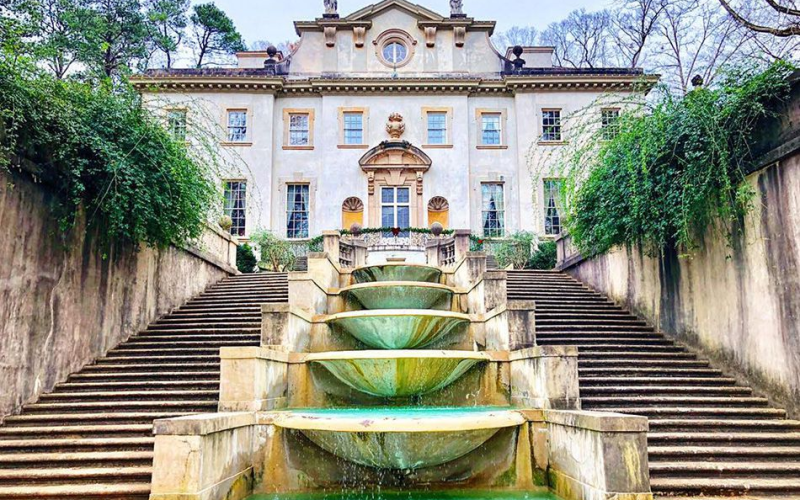
Atlanta, Georgia, ist die Heimat der Atlanta History Centereine 33 Hektar große Mischung aus Geschichte, Natur und Architektur. Dieses Museum ist anerkannt von der Georgia Audubon Gesellschaft (eine gemeinnützige Organisation, die sich für den Schutz der Vögel Georgias und ihrer Lebensräume einsetzt) und sich dafür einsetzt, die Geschichten der Vergangenheit zu erzählen und zu zeigen, wie sie unsere Gegenwart und Zukunft prägen. Sie haben sich darauf spezialisiert, die Geschichte von Atlanta durch ein nachhaltiges Objektiv zu präsentieren und die Verbindung zwischen der Geschichte Atlantas und unserer natürlichen Welt herzustellen.
Das Atlanta History Center verwendet innovative Praktiken der Nachhaltigkeit wie z. B. ein integriertes Kompostierungsprogramm, energieeffiziente Gebäudesysteme und Methoden zur Wassereinsparung. Mit diesen Praktiken demonstrieren sie ihr Verständnis von Verantwortungsbewusstsein, während sie gleichzeitig ihre Besucher zu einem nachhaltigeren Lebensstil ermutigen. Das Museum bereitet sich darauf vor, im Jahr 2026 sein hundertjähriges Bestehen zu feiern, und sein nachhaltiger Fortschritt ist ein Vorbild für andere Museen, die in seine Fußstapfen treten wollen.
Das Climate Toolkit hatte die Gelegenheit, Jackson McQuigg, den Vizepräsidenten für Immobilien des Atlanta History Center, zu interviewen, um mit ihm über nachhaltige Praktiken zu sprechen und darüber, wie sie ihr Museum mit der Gemeinschaft und der Umwelt verbinden.

Das Museum hat sein HLK-System im Jahr 2022 erneuert. Wie hat sich die Änderung der Energieeffizienz auf die allgemeinen Nachhaltigkeitsziele des Museums ausgewirkt?
Ein Energieaudit des in Atlanta ansässigen Southface Institute weckte 2013 unser Interesse an einer Modernisierung der Hauptkälteanlage in unserem größten Gebäude, dem Atlanta History Museum. In diesem Bericht wurde vorgeschlagen, die fünf unabhängigen Kältemaschinen, die zur Versorgung verschiedener Phasen des Museums (das mehrfach erweitert worden war) installiert worden waren, zu einer einzigen, einheitlichen Kältemaschine zusammenzuschalten. Diese Änderung, die eine Neuverrohrung der Anlage beinhaltete, ermöglichte uns mehr Redundanzen im Falle von Problemen mit einer einzelnen Kältemaschine und die Möglichkeit, weniger Kältemaschinen zur Kühlung des Gebäudes einzusetzen.
Natürlich ist eine Klimaanlage für eine Einrichtung wie die unsere von entscheidender Bedeutung, vor allem, wenn man bedenkt, dass wir in den Südstaaten liegen. Die Kühlung dient nicht nur dem Komfort, sondern ist auch für die Entfeuchtung unerlässlich, um Schimmelbildung zu verhindern, die für unsere Kunstwerke sehr schädlich sein könnte.
Die Zusammenschaltung der Kältemaschinen wurde 2013 abgeschlossen, und obwohl dabei erhebliche Einsparungen erzielt wurden, ergab ein anschließendes Energieaudit für 2020, das ebenfalls von Southface durchgeführt wurde, dass eine bessere HVAC-Steuerungsstrategie für die Kältemaschinenanlage des Atlanta History Museum zu noch größeren Einsparungen führen könnte. Obwohl die Kältemaschinen für einen einzigen Kreislauf konfiguriert waren, war jede Kältemaschine weitgehend von der Wassertemperatur abhängig, die von der eigenen Schalttafel überwacht wurde, um zu entscheiden, wann sie in Betrieb genommen und wann sie abgeschaltet werden sollte. In Zusammenarbeit mit Siemens entwickelten wir 2022 einen anderen Ansatz, bei dem stattdessen eine Bedarfsüberwachung eingesetzt wurde. Heute sorgen Differenzdrucksensoren und elektrische Bedarfsüberwachung dafür, dass die Kältemaschinen nur dann laufen, wenn sie wirklich gebraucht werden.
Diese Änderungen haben zu einer erheblichen Verringerung des Energieverbrauchs geführt. Mehr darüber, wie es bei uns funktioniert hat, erfahren Sie hier.
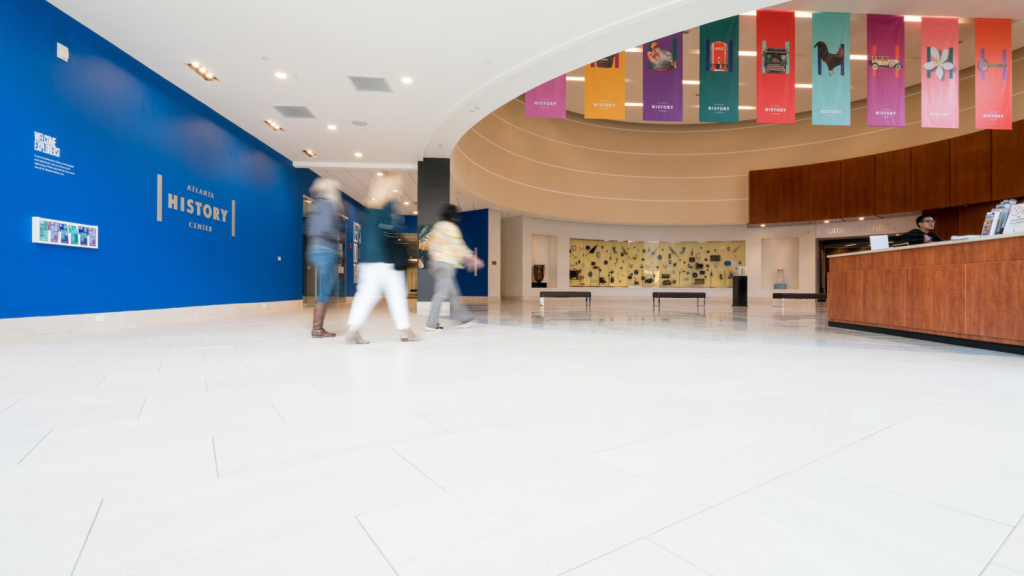
Können Sie die Rolle der Regenwassersammlung im Atlanta History Center näher erläutern? Wie trägt Ihre 5.000-Gallonen-Zisterne zur nachhaltigen Bewässerung und Wassereinsparung bei, und wie können andere Ihrem Beispiel folgen? Ist dieses innovative System eine Möglichkeit für andere Museen wie das Ihre?
In diesem Fall haben wir aus Zitronen Limonade gemacht - und für uns war es ein großes, praktisches Experiment. Zunächst einmal hat das Atlanta History Center das Glück, das 33 Hektar große Goizueta-Gärten als eines seiner Hauptangebote. Die Gärten sind wunderschön, erfordern aber einen hohen Wasserverbrauch. Seit 1980 verfügt das Atlanta History Center über einen eigenen Brunnen zur Wasserversorgung, aber wir verbrauchten immer noch eine beträchtliche Menge an Trinkwasser, das von unserem örtlichen Wasserversorgungsunternehmen zur Verfügung gestellt wurde, um die Gärten zu bewässern.
Als wir ein neues Haus für die Familie gebaut haben Schlacht von Atlanta Zyklorama-Gemälde im Atlanta History Center entdeckten wir während der Bauphase in den Jahren 2015 und 2016 Grundwasser in einer Tiefe von 42 Fuß. Wir pumpten monatelang Wasser ab, bis wir schließlich feststellten, dass es sich um natürliches Wasser handelte, das nicht versiegen würde (unser Teil von Georgia ist für seine unterirdischen Quellen bekannt). Daher entschieden wir uns, das Grundwasser in eine unterirdische Zisterne zu pumpen und es so für die Bewässerung der Goizueta-Gärten verfügbar zu machen. Ebenso leiteten wir einen Teil unserer Dachabflüsse aus dem Gebäude in dieselbe Zisterne. Wir haben auf der Cyclorama-Baustelle eine Stelle gefunden, die für eine 5.000-Gallonen-Zisterne geeignet war, und haben sie installiert. Obwohl dieses Wasser für unsere Gärten von Vorteil war, stellten wir schnell fest, dass die Zisterne nur einen kleinen Teil unseres Bewässerungsbedarfs decken konnte (eine typische Bewässerungszone verbraucht 16 Gallonen Wasser pro Minute). Seitdem haben wir unsere Bewässerungsstrategie durch das Bohren eines weiteren Bewässerungsbrunnens auf unserem Grundstück ergänzt.
Dank der beiden Brunnen und der Zisterne sind die Gärten nicht mehr auf das Trinkwasser des örtlichen Versorgungsunternehmens angewiesen. Das gesamte Wasser, das unsere Gärten verbrauchen, stammt aus Quellen vor Ort.

Erzählen Sie uns von den Strategien, die das Museum einsetzt, um vergessene oder marginalisierte Stimmen in Ihre historischen Erzählungen einzubeziehen, insbesondere in Bezug auf Umwelt- und Nachhaltigkeitsthemen. Wie regen Sie die Besucher dazu an, darüber nachzudenken, wie historische Ereignisse die natürliche Umwelt geprägt haben?
Das Atlanta History Center verbringt viel Zeit damit, sich Gedanken über seine historischen Erzählungen zu machen. Sei es durch unsere Exponate wie Hüte der Königsfamilie Frauen oder Mehr als tapfer: Das Leben von Henry Aaronunsere Programme wie Autorenlesungen, unsere Sammlungenoder unsere Goizueta-Gärten, hoffen wir, ein breites Spektrum von Gästen anzusprechen, die diese Geschichten fesselnd finden. Wir sind uns sehr bewusst, dass ein engagiertes, wirklich interessiertes Publikum mehr von uns lernen wird, was die Messlatte hoch legt.
Unser Leitprinzipien helfen, die Gespräche mit uns und unseren Gästen zu führen. Wir wollen ein Raum für Gespräche für alle sein und wollen sicherlich nicht mit unseren Besuchern über eine ideologische Leere sprechen. Wenn es darum geht, unseren Gästen zu vermitteln, wie historische Ereignisse die natürliche Umwelt geformt haben, möchte ich auf zwei bemerkenswerte physische Beispiele hinweisen, die wir auf unserem 33 Hektar großen Gelände haben: unsere Farm aus den 1860er Jahren, die Smith-Farmund die 19th Jahrhundert, die wir auf unserem Swan Woods Trail haben. Realistischer als diese Beispiele geht es nicht mehr.


Wie sehen Sie Geschichte, Umweltverantwortung und aktives bürgerschaftliches Engagement als Kräfte, die die Zukunft der Nachhaltigkeit prägen?
Es gibt unzählige Beispiele dafür, warum bürgerschaftliches Engagement wichtig ist und wie es sich auf Demokratie und Wahlen auswirkt. Nur wenige Meter von dem Ort entfernt, an dem ich dies schreibe, in unserem James G. Kenan Research Center, sind die Archive der mutigen Atlantiker, die für das Wahlrecht gekämpft haben. Diese Geschichten sind eine ergreifende Erinnerung daran, wie sich etwas ändern kann, wenn sich die Bürgerinnen und Bürger gemeinsam für das Allgemeinwohl einsetzen.
Was den Zusammenhang zwischen der Geschichte und der Zukunft der Nachhaltigkeit angeht, so genügt ein Blick in die Vergangenheit. Die sozialen und wirtschaftlichen Probleme im Zusammenhang mit der Baumwollproduktion in Georgia und anderen Südstaaten sind allgemein bekannt. Weniger bekannt ist, wie der Baumwollanbau und die damit verbundenen landwirtschaftlichen Praktiken im 19.th und Anfang 20th jahrhundertelang die Böden unseres Staates und anderer Staaten ausgelaugt. Baumwolle verursachte Erosionsprobleme und erschöpfte den Boden in Teilen unseres Staates für Jahrzehnte (Georgia sogar einen von ihnen in eine Touristenattraktion verwandelt).
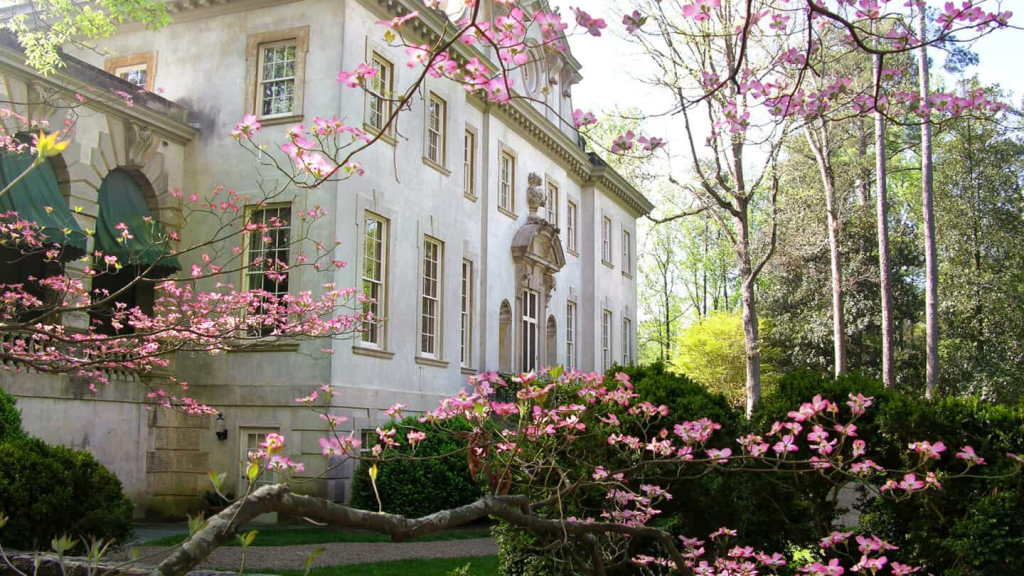
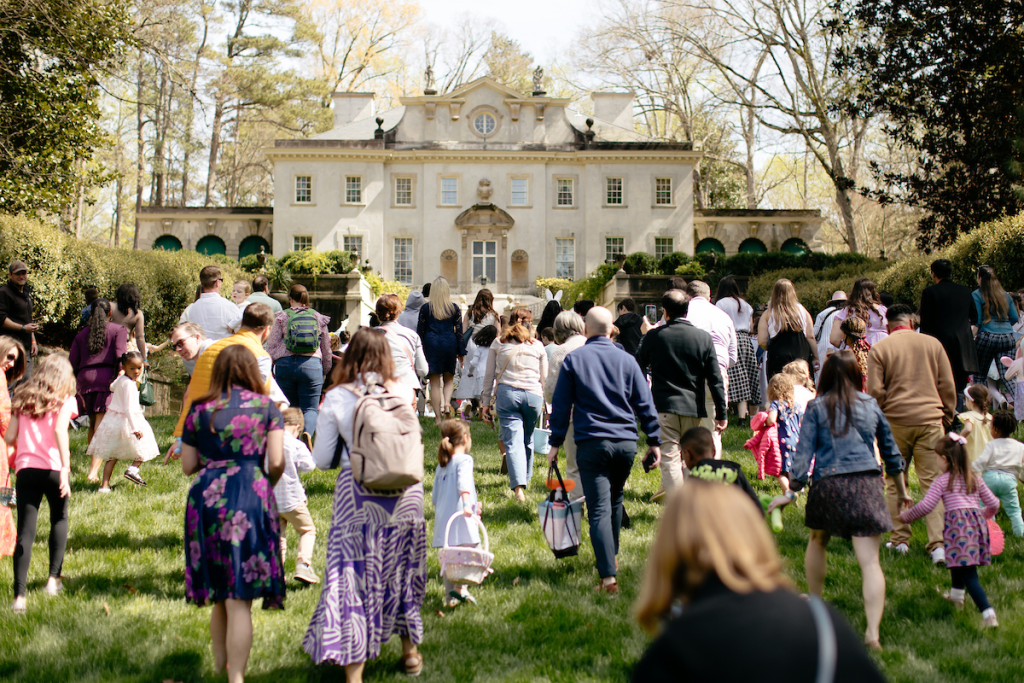
Gibt es derzeit in Georgien Aktivitäten, die für die Umwelt besonders bedenklich sind?
Hier in der Region Atlanta gibt es hitzige Diskussionen über Chemieanlagen, Luftqualität vom Wachstum in Metro Atlanta, und "Ewige Chemikalien" aus der Teppichproduktion die Auswirkungen auf die Wasserversorgung der Städte und Gemeinden in unserem Norden. Und wer wird sich zu diesen Themen äußern? Hoffentlich gebildete, engagierte Bürger, die zur Wahl gehen - vielleicht inspiriert von den historischen Persönlichkeiten, über die wir jeden Tag sprechen.
Wie sieht es mit Blick auf Ihr 100-jähriges Jubiläum im Jahr 2026 mit der Nachhaltigkeit in Ihren langfristigen Plänen aus?
Das ist eine einfache Frage! Der Klimawandel ist real und wirkt sich auf unseren Planeten aus. Es gibt aber auch viele wirtschaftliche Gründe, nachhaltig zu sein. Nachhaltigkeit ist für uns die richtige geschäftliche Entscheidung, denn so können wir Mittel freisetzen, die wir sonst für Stromrechnungen ausgeben würden, um uns auf unseren Auftrag zu konzentrieren. Museen sind ein Unternehmen - und ich denke, wir sind uns alle einig, dass unsere Spender dem Atlanta History Center ihr hart verdientes Geld nicht schenken, um die Licht- oder Wasserrechnung zu bezahlen. Ehrlich gesagt, würden wir dieses Geld lieber dafür ausgeben, Kindern Geschichte näher zu bringen. Unsere Besucher und Spender erwarten von uns, dass wir Nachhaltigkeit praktizieren, aber die Entscheidung, nachhaltig zu sein, ist oft eine, die sich für uns rechnet und Sinn macht. Und wohlgemerkt, ich sagte Praxis Nachhaltigkeit. In dieser Hinsicht können wir uns immer noch verbessern.



Das Atlanta History Center ist ein Beispiel dafür, wie Vergangenheit, Gegenwart und Zukunft zusammenwirken, um ein stärkeres Engagement für die Gemeinschaft zu schaffen und zu einer besseren Nachhaltigkeit zu gelangen. Durch die Erzählungen der Museen und die Lehren aus Atlantas reichem Hintergrund bewahren sie ihre Geschichte und regen die Besucher dazu an, über ihre Rolle in unserer Umwelt nachzudenken. Das Engagement des Museums für Nachhaltigkeit ist ein wesentlicher Bestandteil seines Auftrags und seines Versprechens an künftige Generationen. Das Atlanta History Center macht sich auf den Weg zum Klimaschutz und trägt dazu bei, einen Weg für eine nachhaltigere und integrative Zukunft zu schaffen.
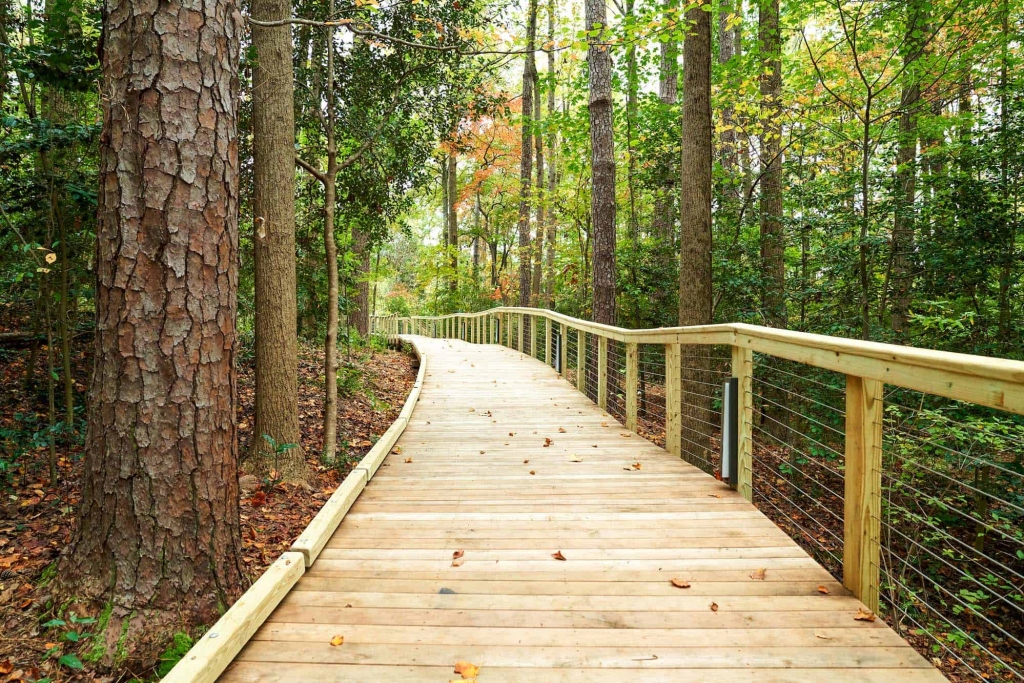






Schreibe einen Kommentar